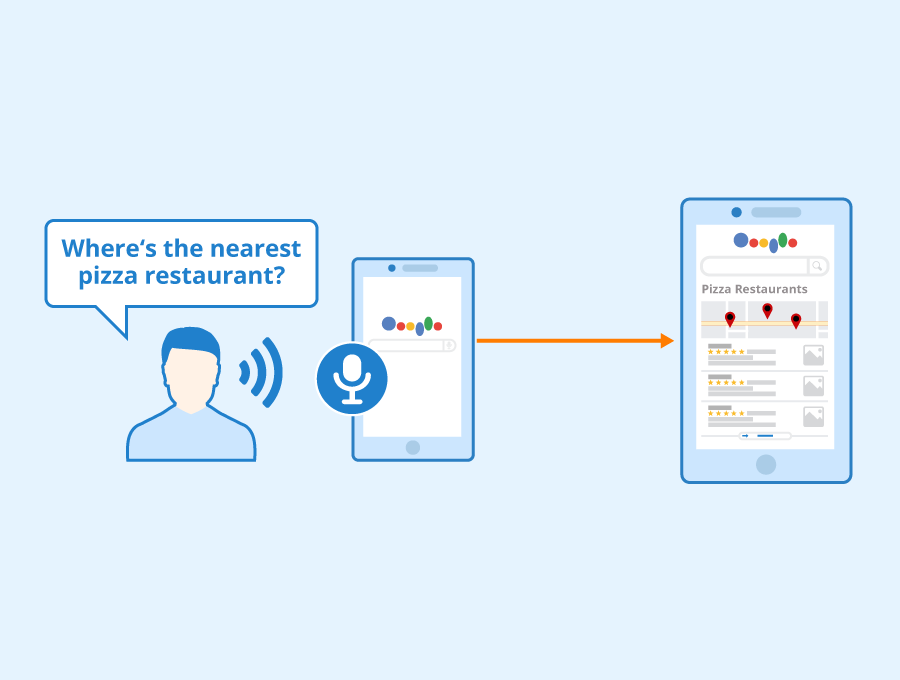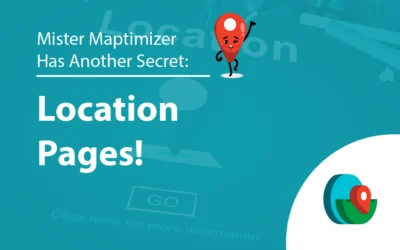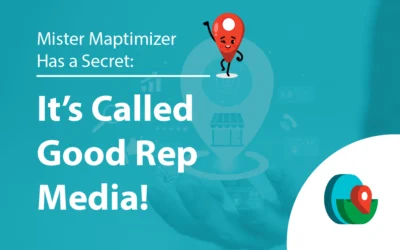Have you ever felt like search engines just don’t understand you? You type in a question, hoping for a direct answer, but you’re presented with pages of links that barely touch upon what you’re truly asking. Finding information is easier with conversational search; it’s a much more natural way to look things up.
Imagine conversational search as chatting with an extremely knowledgeable friend. Instead of typing strict keywords, you ask questions in a natural way, and you receive clear, concise answers. Search engines are being used differently now, thanks to this new method.
Table of Contents:
- Understanding Conversational Search
- How Conversational Search is Changing the Game
- How Conversational Search Uses AI
- Beyond Simple Question-and-Answer: The Future of Conversational Search
- Conclusion
Understanding Conversational Search
Traditional search engines rely on matching the keywords in your query to keywords found on web pages. However, conversational search goes much further. This system uses natural language processing; it understands your questions and finds the right information.
Conversational search employs natural language understanding (NLU) and contextual awareness. Machine learning, search engines, and language models understand what you mean and give you better answers because they get the context. The key parts powering this language processing are described below. This is really key.
From Keywords to Conversations
For a long time, we’ve been conditioned to use keywords when interacting with search engines. We’ve learned to simplify our questions into the smallest possible fragments, hoping the search engine will somehow understand the full context. Many of us have even stopped typing full questions into search because the results were often disappointing.
The traditional method depends on the search engine locating pages that contain those specific words. The impact of this change is a noticeably better user experience; it’s a big step forward. This can lead to a collection of results that may be somewhat relevant, but often fail to address the actual core of your question.
Conversational search operates differently. Large language models are making search engines much better. They’re learning from what we search for and getting smarter all the time.
The Magic Behind It: Natural Language Processing
Natural Language Processing (NLP) is central to conversational search. NLP enables search engines to process complete questions and statements just like a human would. It’s similar to transitioning from sending one-word texts to engaging in a full, proper conversation with a friend.
This is done using advanced methods; for example, machine learning and various algorithms are employed. This capability allows conversational search work to comprehend what you *mean*, not merely what you *type*. Following up on questions and recalling previous chats are features of this search. Talking feels easy and natural.
How Conversational Search is Changing the Game
Consider your everyday routines. Siri, Alexa, and Google Assistant are all options. These platforms let you search by voice; say what you need, and the app will give you text answers.
By 2024, it was projected that the number of digital voice assistant units would surpass the global human population. We use voice and conversational search so much; it’s changed how we do things. Voice search? Interacting is way better now. The difference is night and day.
As more of these platforms offer contextualized responses, our reliance on virtual assistance expands. They go from just doing tasks to being helpful friends, working together as a team.
The Amount of Information Being Created is Staggering
The enormous volume of data available will soon become overwhelming, if it isn’t already. For example, by the end of 2025, a substantial increase to over 181 zettabytes (ZB) of content is anticipated.
Company data is available; check internal libraries and organizational databases. Managing data is easier with conversational search, plus it makes searching better and improves how the business runs.
With NLP, you aren’t limited to searching for specific keywords when shopping online. The search process analyzes conversations to pinpoint your needs; it then performs the necessary actions to assist you. Imagine a super-useful sidekick.
The Shift in Marketing Strategies
Online businesses take note: the way products and services are marketed is undergoing a transformation. Consumers have rapidly become accustomed to digital assistants in their homes, expecting comprehensive search capabilities.
If your website continues to depend heavily on keyword mechanisms, customers will soon recognize this disparity and likely choose companies that are adapting to these changes. Customers can confidently buy after making an informed decision, because support is readily available.
Benefits for Businesses and Users
Here’s why this is important:
- For Businesses: Offering consumers a method to interact with your website through conversation can convert those looking for a product, service, or other information into actual buying customers. Seeing how much better this works might just convince them to buy it.
- For Users: Receiving precise answers instead of sifting through numerous search result pages helps everyone save time and reduce frustration. Imagine: quicker access to information AND a better grasp of the facts. These platforms? They offer it.
How Conversational Search Uses AI
Large language models assist search engines in recognizing and responding to user needs and context, continuously improving with each query. Context is used in conversational search to improve the information you get back from a search. This makes searching much easier.
Key Components of AI-Powered Conversational Search: A Step-by-Step Example
Consider all the key components involved when implementing Conversational AI on your own. Reach your goals using tools like OpenSearch—a great open-source program—along with other APIs. Pay attention to the details in your search results—they aren’t always the same.
Let’s explore this further:
Here is a detailed, step-by-step guide from OpenSearch. You may be surprised by its simplicity:
- Log in to OpenSearch.
- Verify that your security plugin is activated.
- Select a Large Language Model (LLM), and then choose an embedding model.
- You can implement Retrieval-Augmented Generation (RAG) for AI. An index with OpenSearch is now necessary.
- We’re going to add a memory to our conversation, using resources including… A helpful guide to Cohere’s RAG is available. Learning is easy with this resource. This? Game changer. Conversation history is saved.
- Define your new workflow and configuration using an agent; it’ll make things easier.
Lots of things matter when you’re creating a search solution. Consider all the angles! Setting up these solutions? Understanding the conversational flow and default settings is key. Don’t skip this step!
Vector Search, RAG, and Large Language Models Working Together
The essential components required for an AI-enhanced search function are as follows:
| Component | Description |
|---|---|
| Vector database | Data is stored and processed through an embedding process with the models selected. |
| Retrieval-Augmented Generation (RAG) Pipeline | It processes all user questions and uses stored contextual information to derive answers from large language model inputs to provide high-quality search results. |
| Large Language Models (LLMs) | These are responsible for acquiring context from vector databases and simulating human interactions. |
For a search of AI quality, context and getting to your specific content for the users search are important factors.
In an attempt to enhance user service, AI must search your knowledge base. To do this, a Retrieval-Augmented Generation (RAG) pipeline retrieves your documents. Your questions get answered using these documents; we properly cite all sources.
This helps you skip the usual headaches. Large language models are pretty amazing. Like, sometimes it makes stuff up. A core aspect of this process involves extracting portions from various sources within your foundational knowledge and ensuring that all outputs provided to the user are properly sourced.
Beyond Simple Question-and-Answer: The Future of Conversational Search
We’ve only started to explore the potential of conversational search. This isn’t temporary. This will completely change operations, and the changes will keep coming. It’s got incredible power; things change dramatically when it’s involved. Think of it like a total makeover for the whole system.
Personalization Takes Center Stage
As we have increasingly transitioned to digital interactions, there has been a reduction in face-to-face and telephone conversations with customers. Companies have faced challenges in connecting directly, but the potential for growth is significant, as Google confirmed. The shift from basic online chats for inquiries to making purchases, arranging travel, customer service, and even providing advice, can become standard practice.
What’s around the corner? Prepare yourselves; this is a big one. Get ready. Small ones? Who knows!
- Imagine a search experience that recognizes your past interactions and tailors its questions accordingly.
- Search could offer customized answers based on personal data (with permission) and determine if your needs differ from those of most other users.
Personalization completely changes how many businesses run. Prepare to be amazed; this is groundbreaking. Think about customer loyalty programs, targeted advertising, or even customized product recommendations—the possibilities are endless!
Moving from Passive Answers to Proactive Action
Currently, we use systems by asking, “How can I get help with…X?”. But this might soon change as well. Envision this scenario: Customers get help AND completely solve their issues, all thanks to the step-by-step guidance from these prompts. It’s that easy.
Imagine interacting with search and then instantly making the correct decision on which option is best, or opening and adjusting accounts as directed by a virtual, reliable system. When a tool comprehends natural speech, follow-up inquiries, and more, these are merely introductory concepts in the expanding technology of the future and the search capabilities available today.
We’ve reached the end. It’s time; let’s go.

Online chats are changing thanks to conversational search. Count on it being a fixture. It’s not leaving anytime soon. In 2024, businesses will be swiftly adapting and incorporating conversational features into all major services offered online and via their apps.
As users experience rapid and personalized responses to their inquiries, traditional search methods may quickly be superseded by conversational search for consumers and customers in daily life. Employee training and development are now boosted by conversational platforms in many organizations. Learning new things is easier for employees thanks to this. The impact on their work is significant; results are noticeably improved. Staff get better training and are more aware of things.



